Solar FAQs
How Does Solar Power Work?
Solar power works through a series of events involving panels that capture the sun’s energy. It utilises a chemistry phenomenon called the photovoltaic effect. In essence, this photovoltaic effect is a reaction caused by certain materials, such as silicon, producing electrical currents once exposed to the sun.
Here’s what happens in this phenomenon:
First, sunlight hits the solar panels on your roof, activating the solar cells to generate electrical currents. A solar inverter is used to convert the sun’s energy so that it can be used to power your home.
Finally, if there’s excess electricity, it can be fed back into the grid. If qualified, you can gain a small rebate, which can help you reduce your energy bills. Alternatively, you can store it in a solar battery, allowing you to have electricity for later use.
How Do I Know If I Have a Single or Three-Phase Power?
The easiest way is to check your metre box. Open it and count your main switch or fuse cartridge. If you have one, you obviously have a single-phase connection. If you have three, you can already guess that you have three-phase power.
Knowing whether you have a single or three-phase power is essential when looking into installing a solar system or a solar battery. It directly affects the amount of power you can export to the grid for each phase, which is usually 5kWs. So, if you have a single phase, you can only send 5kWs back to the grid.
Also, you need the correct inverter for your system to work. You should only use a single-phase inverter if you have a single-phase connection. This is not a problem with a three-phase power since you can use either.
The “phase” here refers to load distribution. Therefore, single-phase power involves one wire feeding the home or facility with power. In a typical scenario, a one-phase supply has one active and one neutral wire. Meanwhile, a three-phase power uses three wires.
Traditionally, residential properties have a single-phase connection. However, new buildings now have three-phase power. Many homeowners are also looking to upgrade their single-phase connections to three-phase to support the higher demand from their homes.
How Long Does Solar Installation Take?
You’ve probably seen varying answers to this question. Some, you may find enticing, guaranteeing a quick installation, from three to six hours. Others say that it can take anywhere from one to three days. However, some companies will tell you that it can take up to six months! All these answers are correct, depending on the scenario.
From the initial consultation, it can take one to several months for the installation timeframe to be completed. It usually depends on how busy the installer is, but note that this timeframe already includes the day you pay your deposit. Designing and customising your solar system can take another month or so, plus another month to gather materials and permits if required.
However, once everything is in place, the actual installation process typically requires a few hours, specifically if we’re talking about a small system with just a few panels. On the other hand, a larger system, along with the inverter and battery installation, can take one or more days.
How Often Should I Get My Solar Panels Cleaned?
Solar panels have become sturdy and resilient against the elements compared to the past decade. However, they still require regular cleaning and maintenance despite the added durability and better materials. It’s helpful if you can clean them once every six months. However, they will still function efficiently if you choose to clean them once yearly.
In some cases, you will need to clean them every three to six months, especially if your home is surrounded by trees or near the road. Dust, road grime, bird droppings, and leaves can affect the performance of the panels. Cleaning them will help ensure they can capture the sun with higher efficiency.
It’s also recommended that you inspect your solar panels after a rainstorm. Rain does help in cleaning the panels, but only if you have a sloped roof. Otherwise, water can get trapped, making the panels less effective in gathering solar energy.
Do I Need to Be Home on The Day of The Installation?
It is not required for the homeowner to be present on the day of solar installation. However, having you around does help in many aspects. Even if we have already discussed the custom design of your system, it can be useful to have the plan laid out in front of you. If you have any questions, you can put them forward before we carry out the installation.
The structural integrity of your roof will be evaluated before installing the panels. It would be helpful if you’re around, so we can further discuss the matter with you. The panels can last for decades, which could outlast your old roof. Therefore, you may need to install a new or stronger roof first before we can proceed with the installation.
Another benefit of having you around is that we can advise you on how to maintain the entire system. You get the details directly from our experts, so you will know how to prolong the life of the panels, inverter, and battery storage if you have one.
Got a Question?
Didn’t find the answer to your solar question above? Get in touch with our team and we can help!
